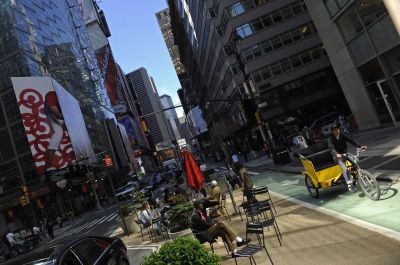Path to good health, less pollution is the sidewalk: report

Your support helps us to tell the story
From reproductive rights to climate change to Big Tech, The Independent is on the ground when the story is developing. Whether it's investigating the financials of Elon Musk's pro-Trump PAC or producing our latest documentary, 'The A Word', which shines a light on the American women fighting for reproductive rights, we know how important it is to parse out the facts from the messaging.
At such a critical moment in US history, we need reporters on the ground. Your donation allows us to keep sending journalists to speak to both sides of the story.
The Independent is trusted by Americans across the entire political spectrum. And unlike many other quality news outlets, we choose not to lock Americans out of our reporting and analysis with paywalls. We believe quality journalism should be available to everyone, paid for by those who can afford it.
Your support makes all the difference.US pressure groups joined forces Monday to urge authorities to spend more to improve Americans' health and cut greenhouse gas emissions.
But it was neither health care reform nor cap-and-trade that they were talking about, but a call for state and local authorities to spend more to make US streets safe for pedestrians and cyclists.
Designing towns and cities to make it more appealing and safer to walk or ride a bike would not only help fight the US obesity epidemic and improve health but would also reduce greenhouse gas emissions and air pollution, a report issued by the Surface Transportation Policy Partnership and Transportation for America said.
Currently, no state spends more than five percent of federal transportation funds on projects that could improve pedestrian and cyclist safety, such as building more sidewalks or "zebra crossings," the report said.
Groups including the influential AARP seniors' group and the American Public Health Association contributed to the report, which showed that the 52 largest urban areas in the United States spend just 1.39 dollars of federal funding per person on projects for cyclists and pedestrians.
And that despite the fact that nine percent of all trips in the United States are made on foot and 107 million Americans walk to work each day.
Too often, walkers take their lives into their hands in the United States, where streets are "engineered for speeding cars and make little or no provision for people on foot, in wheelchairs or on a bicycle," the report said.
More than 76,000 Americans have been killed while crossing or walking along a street in their community.
Forty percent of US communities either don't have sidewalks or have inadequate ones, the report pointed out.
Pedestrians comprise nearly 12 percent of all traffic deaths in the United States.
But less than 1.5 percent of funds authorized under a 2005 federal transportation law have been allocated to projects to improve the safety of pedestrians and cyclists, the report said, calling for government funding for walker and bicycle infrastructure to be boosted to match, in percentage terms, the ratio of traffic fatalities.
Join our commenting forum
Join thought-provoking conversations, follow other Independent readers and see their replies
Comments